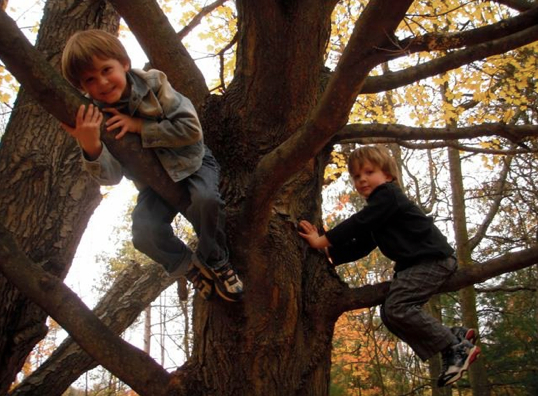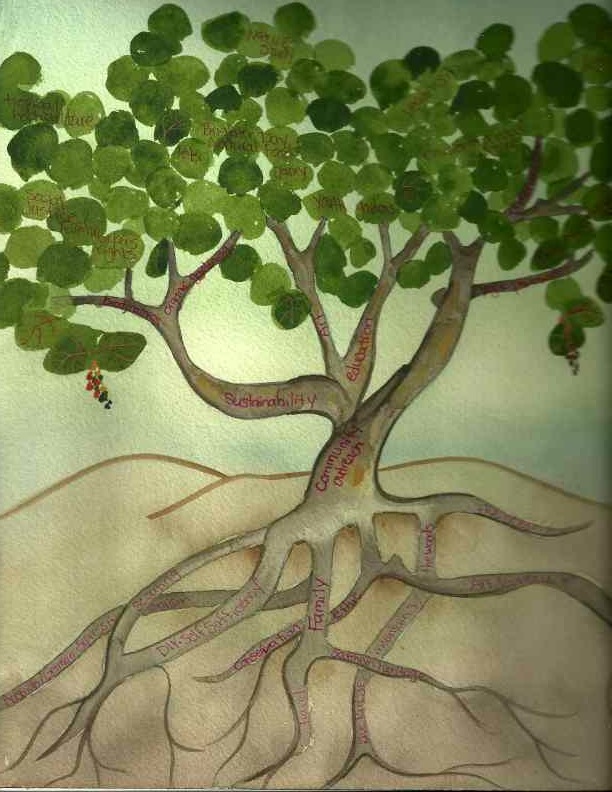Wonder Wednesday #18: Trees of Environmentalism
Are you ready to make your trees? Have you been thinking about the seeds planted and roots grown deep that have made you the inspired environmentalists, naturalist, eco educator/parent you are today? Yes? No? Either way that’s okay! That’s what this activity is for!
At first, the thought of doing an exercise to explore my ecological identity stressed me out and I probably wouldn’t have done it if I wasn’t forced to by a grad school professor! But seriously, I got so much out of doing this activity. I feel very confident in my choices and teaching of environmental concepts because I really know where I stand in the broader scope of environmental actions and within my own limits and comfort zones. Whether you are a parent/teacher with a first year garden, not invested any more than in how many tomatoes you can harvest, or a veteran ecology professor who is no stranger to Earth First! activism I promise you will be happy you took some time to explore ecological identity. Cross my heart and hope to die!

“Let nature be your teacher.” William Wordsworth
This is a fantastic, and developmentally appropriate, reflective exercise to do with upper high school (15-18 year old) students. It really gets them thinking about their influences and the direction they are heading as they discover, unfold, and evolve their personal values and ethics regarding their environment. Be sure to do it yourself before teaching it though, so you can share your own findings with the students when they share.
As a lead up to this exercise you may want to expose the students to various schools of environmental thought as well as naturalists and environmental activists throughout history to the present. Explore current environmental documentaries on pressing subjects such as colony collapse disorder, climate change, GMOs, agribusiness, and/or water. Remember, along with global issues, explore local environmental concerns as well. Compliment these ecophobic topics with action plans and ways that environmental groups are working for positive change, including ways students can get involved in actions locally. We don’t want to overwhelm them before we even begin!
Wonder Wednesday #18: Trees of Environmentalism
Paraphrased and pretty much quoted from the book Ecological Identity by Mitchell Thomashow
1. Visualize your favorite tree (botanically real or imaginary): roots, trunk, branches, leaves.
2. Now picture the concept of environmentalism as a tree:
Roots- symbolize seminal ideas, philosohpical legacy, moral foundations, teachers, role models
Branches- reflect the evolution of the roots and the multiple variations of those ideas, a network of interpretations, controversies, convergences and divergences
Leaves- these are the people, organizations, and perspectives that make up environmentalism in your life
Trunk- the place where ideas and actions meet, linking past to present, and self to the world
Your tree is your personal view on environmental thought as relating to your personal life and the way you want to relay environmental concepts to your children or students. The tree is a metaphor for integrating personal values and knowledge. It allows for diversity. Leaves provide a tree food through photosynthesis when living, but also nourish the roots when they decompose. Do your leaves help you reinterpret how your past is understood, changing perspective? The trunk is where it all gets sorted out, where ideas and actions mix, where stability and change meet.
3. Reflect on the people, ideas, events, books, media, and experiences that have significantly influenced your approach to environmentalism.
4. Now using the symbol of your tree as a framework, design your tree of environmentalism. Use drawing, memoir, charts, illustrated essay, photo collage, annotated sculpture, or any other creative method you find meaningful for expressing your environmental history and future path. Using an artistic right brained approach to this exercise will allow you and your students to explore the concepts in a non linear way.
5. Think about which ideas go where for you. Where do you currently fit on the tree? Integrate your knowledge of environmentalism with your beliefs, feelings, and motivations.
6. This tree symbolizes how you perceive and manifest your own ecological identity. How has your sense of environmentalism influences your sense of self?
7. If you decide to do this exercise with your students, be sure to share the trees as a group. This will help the students, through the exposure to various expressions of ecological identity, amplify, challenge, nourish, and legitimate their voices as they proclaim their affiliations. In formulating an ecological identity, it is crucial to understand where you fit in the broad spectrum of environmental thought. This will help coordinate awareness with both professional (or scholastic) direction and personal lifestyle choices.

Here is a larger look at my tree in case you need a more visual guide to the exercise. (Sorry for the blurry corner. It’s the only shot of it I have!) Keep in mind though that I do have a 20 page ecological identity essay to go along with this from grad school, so I have really thought about this topic! I’m going to do this exercise again. After looking at this image form 3 years ago, I now see places I have headed and influences I have realized since I began to examine my ecological identity. So keep re-looking at your ecological identity every few years in mind to see how your tree is growing!
